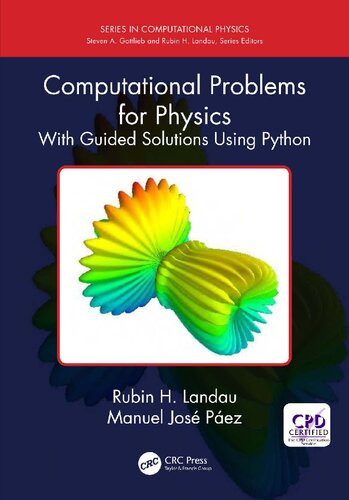

Most ebook files are in PDF format, so you can easily read them using various software such as Foxit Reader or directly on the Google Chrome browser.
Some ebook files are released by publishers in other formats such as .awz, .mobi, .epub, .fb2, etc. You may need to install specific software to read these formats on mobile/PC, such as Calibre.
Please read the tutorial at this link: https://ebookbell.com/faq
We offer FREE conversion to the popular formats you request; however, this may take some time. Therefore, right after payment, please email us, and we will try to provide the service as quickly as possible.
For some exceptional file formats or broken links (if any), please refrain from opening any disputes. Instead, email us first, and we will try to assist within a maximum of 6 hours.
EbookBell Team

4.4
82 reviewsOur future scientists and professionals must be conversant in computational techniques. In order to facilitate integration of computer methods into existing physics courses, this textbook offers a large number of worked examples and problems with fully guided solutions in Python as well as other languages (Mathematica, Java, C, Fortran, and Maple). It’s also intended as a self-study guide for learning how to use computer methods in physics. The authors include an introductory chapter on numerical tools and indication of computational and physics difficulty level for each problem. Readers also benefit from the following features:
• Detailed explanations and solutions in various coding languages.
• Problems are ranked based on computational and physics difficulty.
• Basics of numerical methods covered in an introductory chapter.
• Programming guidance via flowcharts and pseudocode.
Rubin Landau is a Distinguished Professor Emeritus in the Department of Physics at Oregon State University in Corvallis and a Fellow of the American Physical Society (Division of Computational Physics).
Manuel Jose Paez-Mejia is a Professor of Physics at Universidad de Antioquia in Medellín, Colombia.